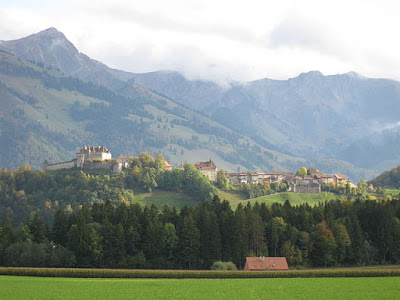 |
| The Liberation Day Ceremony at the village war memorial |
Those who follow the blog will recall that in December I told the story of Reserve Gendarme David Devigne and his efforts to honour the last resting place of CQMS Gawin Wild of the 3rd Tyneside Irish.
Just over a week ago, my wife and I travelled to the Haut Medoc, the wine growing region north west of Bordeaux, and took part in the ceremony organised by David to coincide with La Fête de la Victoire.
We met at the town hall and it seemed that the whole of the village had turned out. Members of the ‘Liberty Medoc’, a group that keep alive the military traditions of the region were in attendance. Also present were members of Souvenir de Frankton, a group that commemorates Operation Frankton, more popularly known as the Cockleshell Heroes, that canoed down the Gironde into Bordeaux harbour and blew up several merchant ships.
Introductions were made and David had very thoughtfully arranged for a young lady called Charlotte, whose English was impeccable, to translate for us. The whole assembly made their way to the village cemetery where there was a short service at the war memorial to commemorate the Liberation. A trumpeter played Last Post, Reveille and in the French tradition ‘Le Attaque’ after which the village band played the French national anthem.
We then moved to the grave of Gawin Wild and his wife Mathilde. Here four wreaths of poppies were laid and the Mayor laid a huge bunch of flowers. The British national anthem was played over the speakers.
 |
| John waiting his turn to lay the wreath. David is reading the story of Gawin Wild to the assembled villagers. |
 |
| David looks on as John salutes after laying the wreath |
Gawin’s grave has been painted and a new stone added with a photo and a Tyneside Irish Badge with a suitable inscription.
 |
| Gawin Wild's grave, with wreaths and flowers laid |
As can be seen by the photos the village made a great deal of the fact Gawin Wild is buried in their village and we received an amazing welcome and they were so pleased that someone from Durham had come to take part. Afterwards there was coffee and snacks and a chance to chat (with a lot of help from Charlotte) to many of the people.
 |
| Charlotte translates between John's wife (left) and David's mother (right) |






